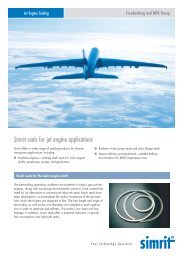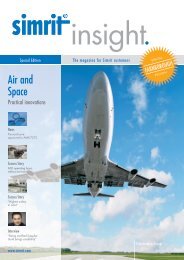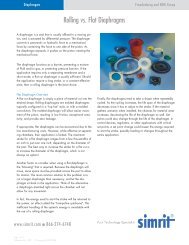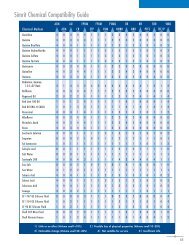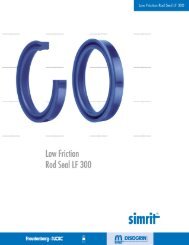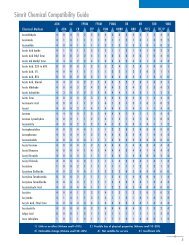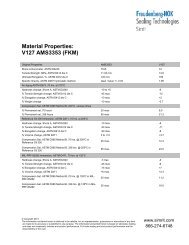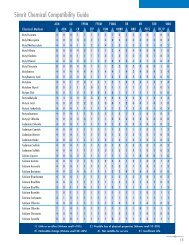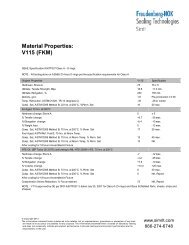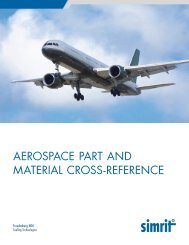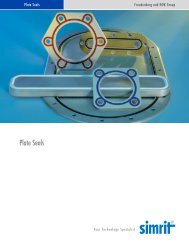Diaphragm Design Manual - Simrit
Diaphragm Design Manual - Simrit
Diaphragm Design Manual - Simrit
You also want an ePaper? Increase the reach of your titles
YUMPU automatically turns print PDFs into web optimized ePapers that Google loves.
Formula 2 - Blousing Flat <strong>Diaphragm</strong>s for Stroke (reference Figure 1) Bore Diameter Piston Diameter OD Bore Diameter 2 x S 2whereS HalfStroke2 Bore Diameter Piston Diameter 22The Trampoline SyndromeThis phenomenon is typical of a diaphragm stretched during assembly instead of being bloused.What results is a bouncing or spring type of action requiring more energy from the system to startthe stroke. In all but a few cases, this type of diaphragm interference is unwanted and should beavoided.Flat <strong>Diaphragm</strong>s - Closing CommentsRubber under stress most often reacts by taking a set, which is almost always a result of stretching.Often when removing a diaphragm after use, the diaphragm will have formed a convolution. Thischange results in a lessening of the energy required to activate the diaphragm and can change theeffective area, which can result in set point changes. If there is concern that these kinds of changesare going to present problems in your application, it may be best to design your application around aformed diaphragm.Formed <strong>Diaphragm</strong>sMany of the problems associated with flat diaphragms can be overcome by using a formed diaphragm.The primary advantages of formed diaphragms are their application versatility (see Technical FlyerPage 55 for additional insight on this topic). There are several basic types of formed diaphragms andthey are detailed in the following sections in the order of their stroke capability – minimum to maximum:Many of the formed styles, with the notable exception of the deep draw, can be made as two sidecoated. For deep draw styles it is often necessary to produce these parts in a one side coatedconstruction.One side coated construction is where the chosen fabric and elastomer are brought together at the moldto form the finished part. The main difference between one side coated construction and two side coatedconstruction is that in one side coated construction the fabric has 90 to 95% of the elastomer on one sideand only 5% to 10% on the other. A one side coated diaphragm is designed for use with the system’shighest pressure on its elastomer side only.Pressure reversals, or pressure on the fabric side of a one side coated diaphragm, can blow the elastomeroff the fabric causing a failure. Occasional or momentary pressure spikes may not be a problem, butconsistently repeating ones will be.<strong>Simrit</strong>’s team of diaphragm engineers is ready to guide you to the best diaphragm solution for yourapplication needs, regardless of construction.© Copyright FNGP 200919



